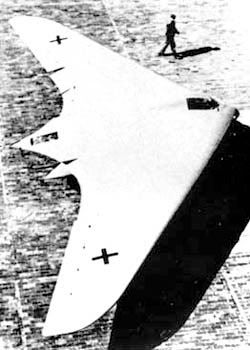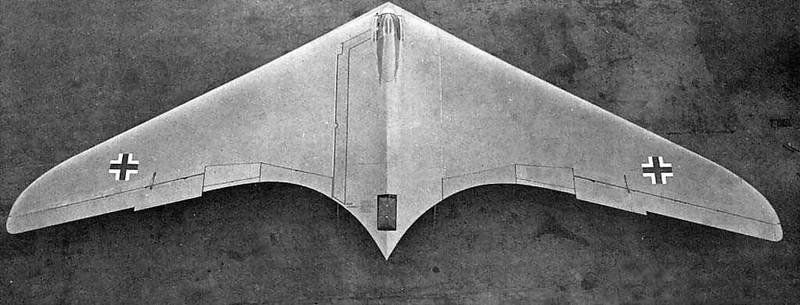I found this picture elsewhere, and that might give a clue. Look at the shaped inlet channels:
Posted on 02/11/2010 12:06:33 AM PST by ErnstStavroBlofeld
On 29 January 2010, the Sukhoi PAK-FA (Perspektivnyi Aviatsionnyi Kompleks Frontovoi Aviatsy, literally "Future Front line Aircraft System"), which could variously be described as a technology demonstrator, the first prototype of the future T-50 fighter, or an intermediate step between the two, took to the air for the first time from the freezing runway of Dzemgi Air Force Base (shared with the KnAAPO plant) at Komsomolsk-on-Amur in the Russian Far East Siberia (see also http://www.defpro.com/daily/details/497/). A fundamental step has at last been accomplished in the development of the long-expected Russian response to the American F-22 RAPTOR air dominance fighter. Airframe
The aerodynamic configuration of the PAK-FA maintains a vague reference to the Su-27 as regards the fuselage and the location of the engines, which are installed in widely separated nacelles forming a tunnel with the flat bottom of the fuselage. The general planform is a tailed delta, similar to the F-22, with the all-moving horizontal tailplanes close-coupled and on the same plane to the wing without any gap. The twin vertical surfaces, canted outward by perhaps 25°, are also all-moving. This solution has been used rarely in recent times; in particular the ill-fated Northrop YF-23 had a pair of all-moving butterfly tailplanes. The all-moving verticals however had been fairly used in supersonic designs dating back to the late 1950s or 60s, in particular the SR-71 which used a pair of all-moving verticals canted inward to reduce the induced roll moment when the surfaces were rotated, and most of the North American design of the period - the RA-5C VIGILANTE, its contemporary YF-107 and the unique XB-70 - as well as the British BAC TSR 2 used a similar solution.
(Excerpt) Read more at defpro.com ...
I found this picture elsewhere, and that might give a clue. Look at the shaped inlet channels:
Its a great looking plane, but in a match with a F-22 or F-23 we would win.
Instead of F-23, I meant the F-35. We are 50 years ahead of the Russians when it comes to stealth technology.
>We are 50 years ahead of the Russians when it comes to stealth technology.
Sounds like BS.
Soviet Union and Russia never stopped development of radar absorbent / composite materials.
Soviet physicist named Pyotr Ufimtsev made important calculating turned out to be possible in making aircraft with stealth technology.
Stealth technology is not new discovery for Russians.


The NAZI design, however, is not true stealth. It used charcoal coatings to “absorb” radar.
True stealth, involves complex geometries along with radar-absorbent coatings, the theories for the former being developed only in the 60s.
IIRC, a Russian engineer published a series of works on the math behind it, and the Soviets, thinking that the research was pointless, allowed for its international publication.
The Nazis were the pioneers of all-wing stealth technology
The Horten Brothers were there first.
Yes, the theory behind stealth was a Russian discovery, but the aircraft designers never put it into practice. They have had great designers and mathematicians, but the political structure didn’t reward risk takers.
At this point, the new fighter is more like an F-18E, with reduced radar cross section, rather than true stealth.
“In the 1970s, a key piece of the stealth formula emerged when the Americans discovered an obscure 20-year-old scientific paper by Pyotr Ufimtsev, a Russian scientist who had proposed reducing RCS by building an aircraft with flat surfaces and irregular angles, rather than the usual aerodynamically streamlined profile. Bill Schroeder, a mathematician for aircraft maker Lockheed (now Lockheed Martin), developed a computer program that made it possible to predict precisely the RCS of such an aircraft exterior.”
http://dsc.discovery.com/convergence/stealth/article/article.html

Don’t tell that to Jack Northrop.
He built his first flying wing in 1929.
That’s true, and for the kicker, the Russian scientist who developed the theory for radar-deflecting stealth, is now an American, LOL!
He teaches at the Univ. of California, Irvine.
Actually 1930
I agree
And the Smithsonian has the remains of one of the brothers’ birds - it is a “restoration” project awaiting funding.
Heck I would give money to see it fly.
Disclaimer: Opinions posted on Free Republic are those of the individual posters and do not necessarily represent the opinion of Free Republic or its management. All materials posted herein are protected by copyright law and the exemption for fair use of copyrighted works.